Generations of Computer: It’s excellent that you want to know the answers to these questions. In this part, both of these questions will be fully answered. There are several Generations of Computer in which many new technologies were discovered. Technically, the computer is defined as “A computer is an electronic machine that can perform calculations, store data, manipulate information, and be used for sharing resources”.
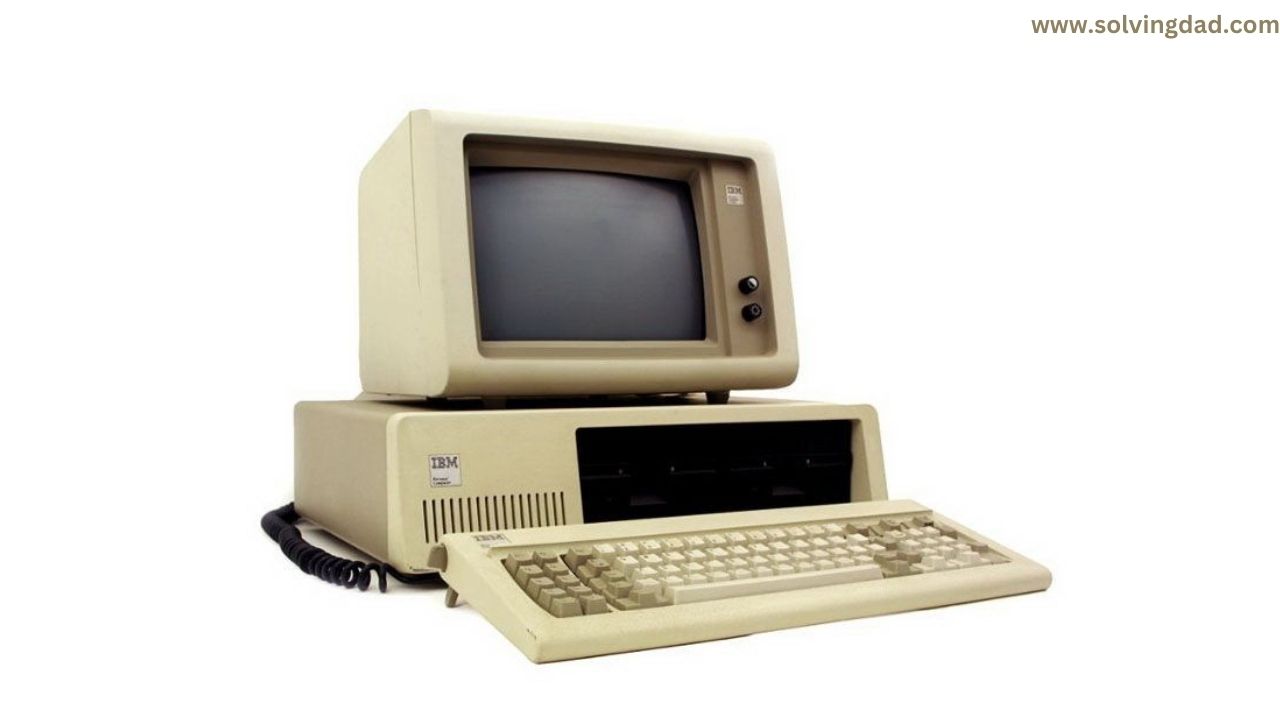
A computer can do any task, they also have the ability to store data, retrieve data, and process information between multiple computers. In this article, we will learn in detail about Computer Generations and their Characteristics. The Evolution of Computer terminology is a technological shift in which computers were used. Initially, the term generation was used to differentiate between various hardware technologies. Today, Manufacturing includes both hardware and software, which when combined form an entire computer system. There are only five generations of computers to date. Each generation, as well as its era and characteristics, are discussed in depth.
Today almost everyone has a Computer that they use for business purposes like typing documents, making word and Excel sheets, writing emails, etc, and also for personal use like playing games, browsing the internet, listening to music, watching multimedia, etc. This means almost everyone is using computers for doing different types of tasks. Today we are using the fifth Generation of Computers which is based on Artificial Intelligence. In this article, you will get to know about the generation of computers from 1st to 5th.
Generations of Computer
The development of computers has passed through various stages. The five different types of Generations of Computer are:
- First Generation (1942 to 1960)
- Second Generation (1960 to 1965)
- Third Generation (1965 to 1971)
- Fourth Generation (1971 to 1990)
- Fifth Generation (Present Generations of Computer and Future of Computers)
First Generation (1942-1960) – Generations of Computer
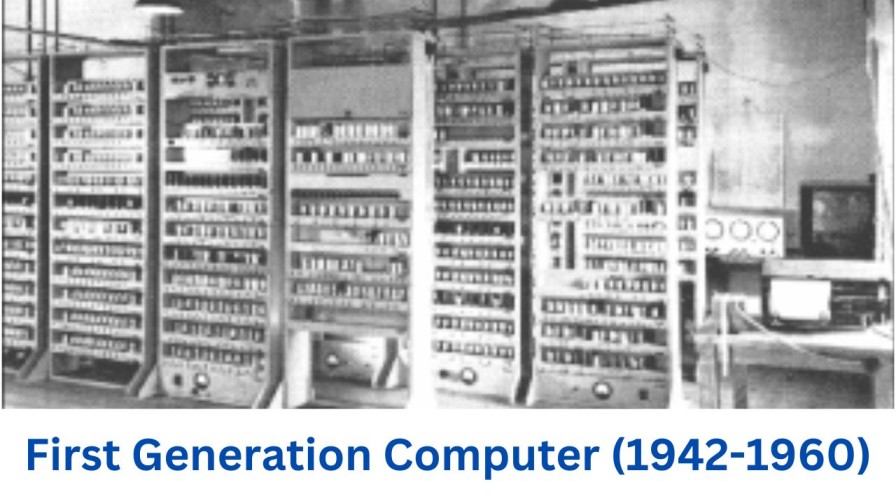
The First-Generation Computers were developed in 1946 by Sir J.P. Eckert and J.W. Mauchly. This computer was named Electronic Numerical Integrator and Calculator (ENIAC). It was completed in a time period of 4 years. This machine contained 18000 vacuum tubes and 70,000 resistors and there were 60,000 buttons and switches in this calculator. The weight of this machine was 28 tonnes and the consumption of electricity was 150KW. After use, it got heated and had to be cooled with water. It took only 200 milliseconds to perform one addition. This calculator became very famous due to its speed. This is the first generation of computers among the Generations of Computer.
Other Computers of the First Generation are UNIVAC-1, IBM-701, IBM-650, Datamatrix-1000, EDSAC, MARK II, and MARK III.
Advantages of First-Generation Computers
The main advantages of first-generation computers were:
- The First-Generation of Computers were very fast in their time.
- They were programmed using machine language.
- The invention of Electronic digital computers was made possible by vacuum tube technology.
- These computers use magnetic drums for memory.
- These computers can perform any calculation in a few milliseconds.
Disadvantages of First-Generation Computers
The main disadvantages of First-Generation Computers were:
- Very big in size.
- Not reliable.
- Consumed a large amount of energy.
- Constant maintenance is required.
- It generates too much heat and it required air-conditioning all the time.
- They were costly.
- Very slow in speed (data processing).
- It was difficult to program because they used only machine language.
- Non-portable.
- Limited commercial use.
Second Generation (1960-1965) – Generations of Computer
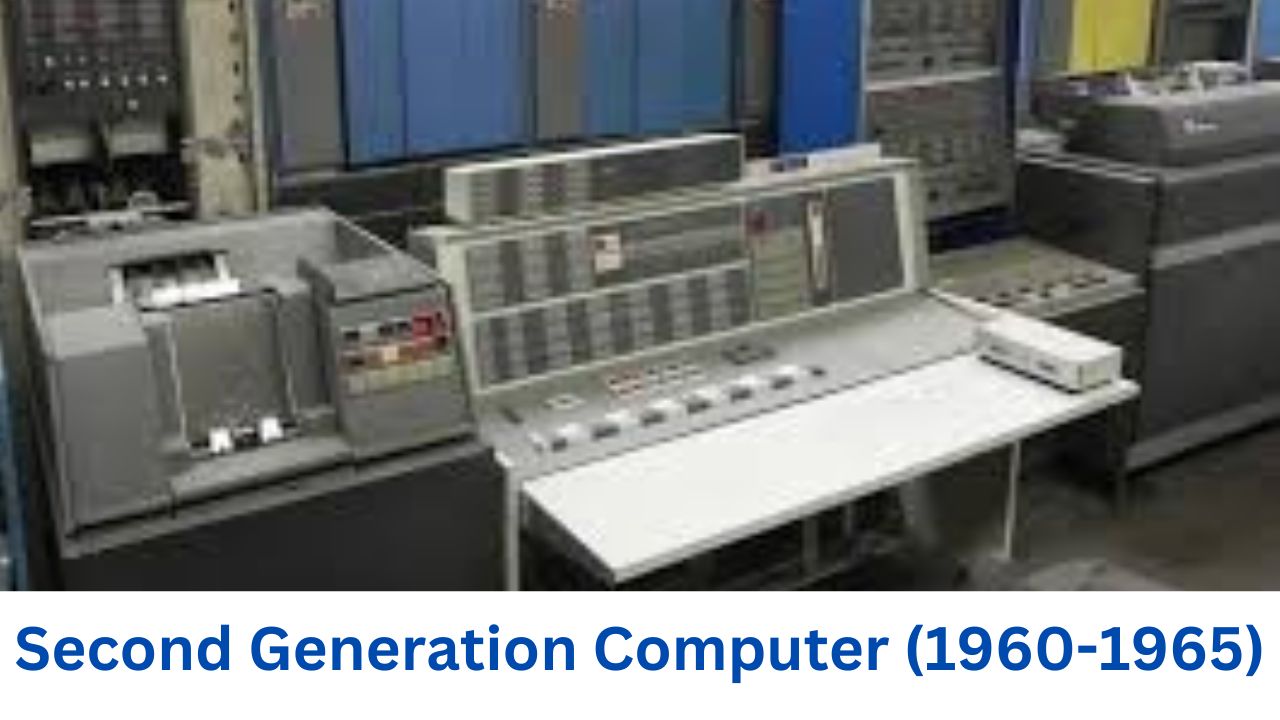
The computers of the second generation are based on the invention of the transistor (1948). Transistors were very small components as compared to vacuum tubes and the consumption of electricity was negligible as compared to first-generation computers. The heating effect was low and the size was comparatively small. The second Generations of Computer are very big in size and they have many heating issues. These computers are cooldown by water. This is the second generation of computers amount the Generations of Computer.
Computers of Second Generation: CDC-3600, IB-700, IBM-1401, ICL-190, UNIVAC-1108, IBM-7094, RCA-501, CDC-1604.
Advantages of Second-Generation Computers
The main advantages of second-generation computers as compared to first-generation computers are:
The advantages of the second-generations of computers are:
- They are low in cost.
- The Second Generations of Computer were small in size as compared to the first Generations of Computer.
- They are fast in speed.
- It generates less heat.
- Second Generation Computers generate less heat.
- They have a low power consumption.
- The Computers of the Second Generation are portable.
- Used for commercial purposes.
- Assembly language was introduced. This language is easy to write programs than machine language.
Disadvantages of Second-Generation Computers
The main disadvantages of this generation of computers were:
- Air-conditioning required.
- commercial production was difficult and these were very costly.
- Constant maintenance is required.
- Only used for special purposes.
Third Generation (1965-1975) – Generations of Computer
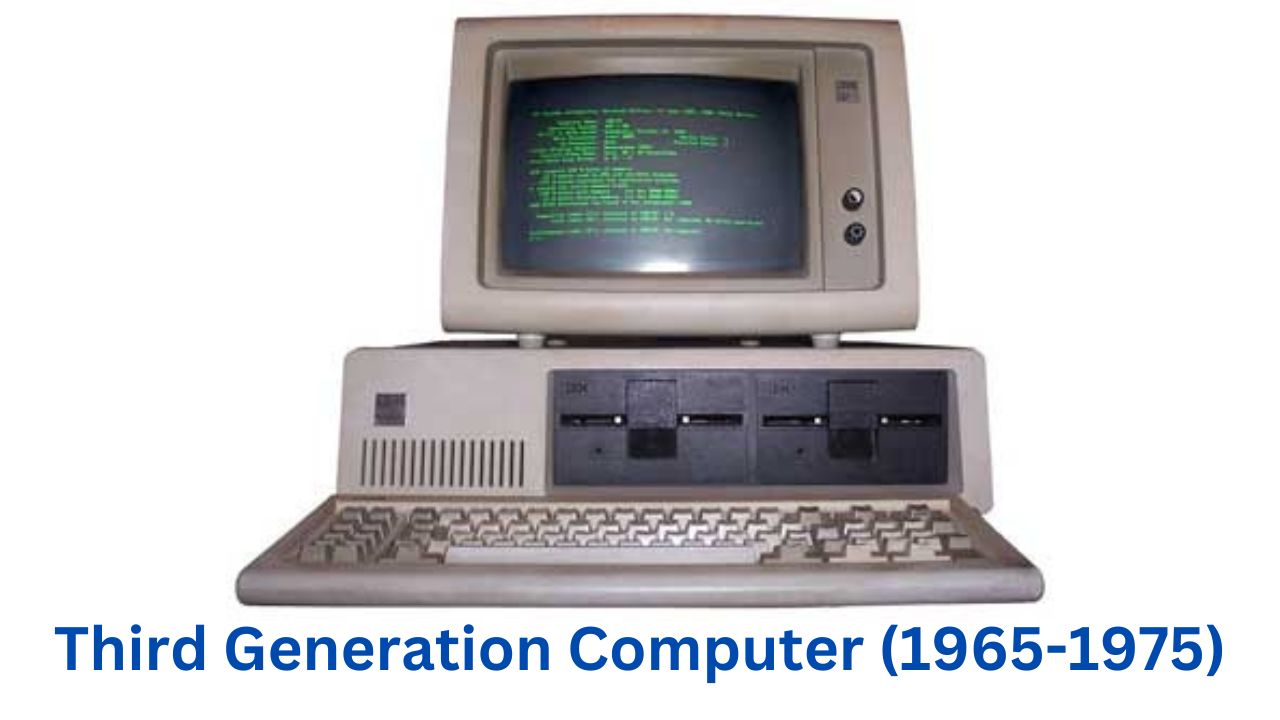
The computers of this generation could be developed after the development of the Integrated Circuit. Integrated circuits were made of silicon. A single Integrated Circuit (IC) chip can control a number of transistors and resistors in the Computer. The third Generations of Computer are much more advanced than first and second-generation computers. This was also called Chip. The computers of this generation were 1000 times fast as compared to first-generation computers and their cost was comparatively low. The memory of these computers was and data processing became very easy. This is the third generation of computers among the Generations of Computer.
Computers of Third Generation: CDC-1700, ICL-2903, PDP-11/45.
Advantages of Third-Generation Computers
The advantages of the third Generation of Computers are:
- These are Smaller in size and portable.
- Third Generation Computers are very fast in computational power.
- They consume very low power and perform so well.
- The maintenance cost of the third Generations of Computer was low due to the failure rate of the hardware devices being very low.
- Third Generation Computer uses Magnetic disk, for external storage.
- It has more storage capacity.
- They are very Easy to operate as they have Operating System installed.
- They are widely used for various commercial applications globally.
- They have very good airflow and generate less heat.
- These computers commonly use High-Level Language.
- The Production cost of the third Generations of Computer is very low.
- They are more reliable.
- Due to the small size of the computer and portability is very easy.
- They can be upgraded easily.
- Many input/output devices were introduced such as a mouse and keyboard etc.
Disadvantages of Third-Generation Computers
the main disadvantages of third-generation computers were:
- Air conditioning was required in the third generation of computers.
- Highly sophisticated technology is required for the manufacture of chips.
Fourth Generation (1971-1990) – Generations of Computer

The further development of IC opened the doors for the development of this generation. IC could hold thousands of transistors on a single component. This technique is known as Large Scale Integrated Circuits. The computers using these circuits are called microcomputers. These computers were manufactured by an American Company-Micro Instrumentation and Telemetry Co. In 1981 IBM manufactured a Personal Computer and after that computers were installed almost at all commercial organizations, schools, colleges, factories, and offices. This is the fourth generation of computer which people are using nowadays.
Computers of Fourth Generation: Intel-4004, Apple I & II, DCM-Spectrum.
Advantages of Computers of Fourth Generation
The advantages of fourth-generation as compared to the previous generation computers are:
- These computers are smaller in size.
- The Production cost of these computers is very low.
- They are very reliable.
- hardware failure of these computers is negligible.
- These are very smaller in size and easily portable.
- Totally general purpose. These computers can be used for any general purpose.
- Air conditioning is not compulsory as technology is being advanced in this Generation.
- These computers have very high processing speeds.
- They have very large internal and external storage capacities.
- Used advanced input & output devices such as optical readers, laser printers, CDROM/DVD-ROM drives, etc.
Disadvantages of Fourth-Generation Computers
The main disadvantages of fourth-generation computers are:
- Highly sophisticated technology is required for the manufacture of microprocessor chips.
- The chances of harmful viruses and malware are high due to network connectivity.
- The file sizes are very big, so they need more storage space.
Fifth Generation (1990 onwards)
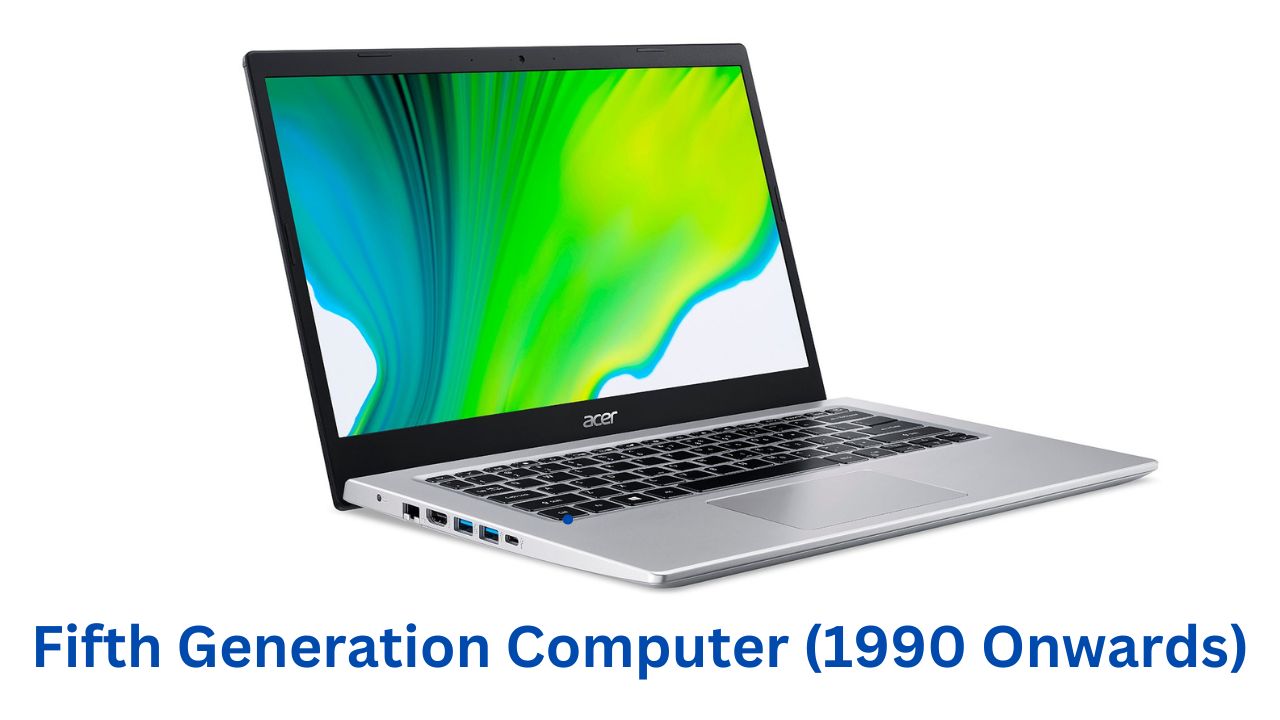
Firstly, Computers that can think and take decisions like human beings have been characterized as the Fifth generation computers and are also referred to as thinking machines, They use VSLI and ULSI. The speed is extremely high in fifth-generation computers. Apart from this, they can perform parallel processing.
Secondly, The concept of Artificial Intelligence has been introduced to allow the computer to take its own decision. It is still in the developmental stage. Moreover, a lot of research and development work is going on in this area in the United States and Japan but it will take some time before such machines are produced for use by the industry. The Fifth Generations of Computer has different types of devices like Personal computers, Laptops, Smartphones, ATMs, Robots, and many others. These Computers are also used for Personal use like Blogging, Freelancing, etc. They have their own thinking power which makes them futuristic. This is the Fifth Generations of Computer and the latest Generation of Computer.
Advantages of Fifth-Generation Computers
- These computers have their own thinking power.
- They can make their decisions themselves.
- These computers have the capability of learning new things and can manage themselves.
- They have capabilities of reasoning.
- Fifth Generation computers have a large capacity for internal storage.
- These Computers have extra high processing speed.
- They also have capabilities of parallel processing.
- These computers have biometrics sensor which works with the help of Artificial Intelligence.
Disadvantages of Fifth-Generations of Computer
- It reduces manpower and jobs.
- It creates a dependency on Computers.
- It increases waste which impacts the environment.
- Fifth-generation Computers have many privacy issues because all the time they connect to the Network.
- The Fifth-Generations of Computer have minimal Disadvantages.
Uses of Fifth-Generations Computers
Of these Generations of Computer, the Fifth Generation of the computer is the most advanced. The uses of the Fifth Generation Computer are:
- ULSIC (Ultra Large Scale Integrated Circuits) technology.
- Artificial Intelligence (AI) technology is also called the knowledge Processor. AI means automatic programs that let the machines think and decide for themselves. The programming languages LISP (List Processor) and PROLOG (Programming with Logic) are used for artificial intelligence. The scientists at ICOT in Japan use PROLOG to develop Artificial Intelligence software.
In Conclusion, these are the five generations that I have well explained above. After reading the article you will come to know about the different Generations of Computer and their characteristics. We are now using the fifth generation computers and soon will be moving to sixth generation computer which looks really futuristic like VR technology etc. If you have any doubts regarding the Generations of Computer you can post in the comment box, it’s always open for you. We will definitely reply to you.
Frequently Asked Questions
What are the five Generations of Computer?
The 5 types of Generation of Computers are:
1. First Generation Computers (1942-1960)
2. Second Generation Computers (1960-1965)
3. Third Generation Computers (1965-1975)
4. Fourth Generation Computers (1971-1990)
5. Fifth Generation Computers (Present Generations of Computer and Future of Computers)
These are the 5 Generations of Computers.
What are the Generations of Computers?
The Generation of Computers basically is the change in technology in which computers are used. Originally, the term generation was used to distinguish between different hardware and software technologies. Today, Generation includes both hardware and software, which together, which together form an entire computer system.
What are the 4 basics of a Computer?
The 4 basic operations that a computer performs are Input, Storage, Processing, and Output.
What are the 6 generations of computers?
Sixth Generation is the Future Generation of Computers in which Artificial Intelligence Computers are developed and many other smart devices. This Future Generation of Computers is also known as Quantum Computers.
| Generations of Computer | Timeline of Generations |
| First Generation | 1942-1960 |
| Second Generation | 1960-1965 |
| Third Generation | 1965-1971 |
| Fourth Generation | 1971-1990 |
| Fifth Generation | Present Generation |
Conclusion
These are the Five Generations of Computers which we have used till now. The fifth Generation of Computers is very advanced and it’s the generation of the Metaverse and Web 3.0. Metaverse and Web 3 technology of Generation of Computer maybe count in the 6th generation of Computers. You can also check Generation of Computer Wikipedia. These are all the Generations of computer.
Thanks for visiting our website Solving Dad!
Happy Learning!
